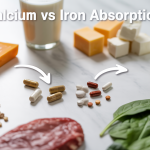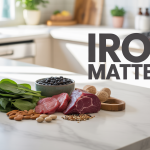Getting slim and toned calves doesn’t have to be complicated. This guide is perfect for fitness enthusiasts who want defined, lean calf muscles without adding bulk.
Many people struggle with stubborn calf fat or lack muscle definition in their lower legs. The right combination of targeted exercises can transform your calves from soft and shapeless to firm and sculpted.
We’ll start by exploring bodyweight calf exercises that build lean muscle and can be done anywhere. Then we’ll dive into high-intensity calf workouts that burn fat while creating definition. Finally, you’ll learn proper form and technique tips that maximize your results and prevent injury.
Ready to build the confident, toned calves you’ve always wanted? Let’s get started.
Understanding Calf Muscle Anatomy for Effective Training
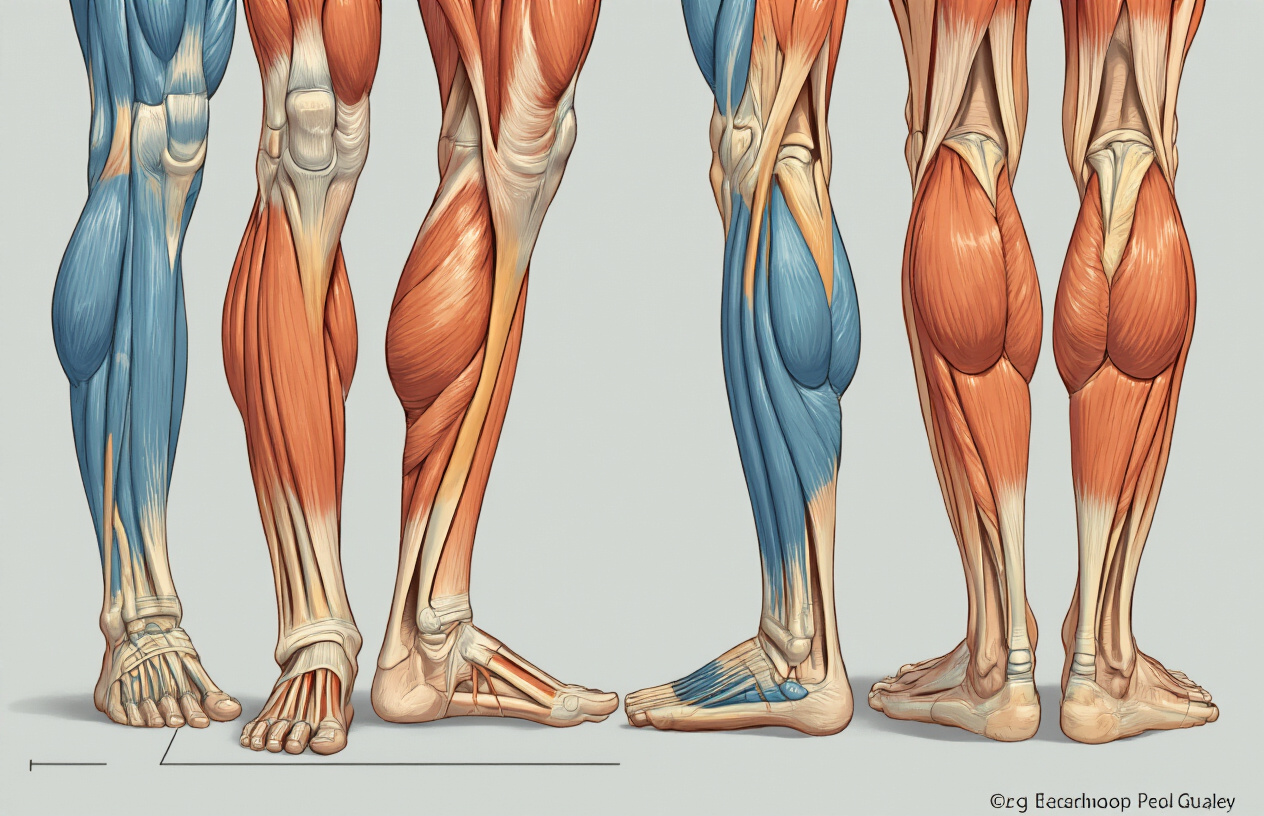
Gastrocnemius muscle targeting for upper calf definition
The gastrocnemius forms the diamond-shaped bulge that creates your calf’s visual impact. This two-headed muscle dominates the upper portion of your lower leg and plays a starring role in activities like jumping, sprinting, and walking on your toes. When you want that classic calf curve that looks great in heels or shorts, you’re really talking about developing this muscle.
What makes the gastrocnemius unique is its dual function – it crosses both your knee and ankle joints. This means it works hardest when your leg is straight, making exercises like standing calf raises particularly effective. The muscle responds well to both heavy loads and higher repetitions, but the key is keeping your knee extended throughout the movement.
To maximize gastrocnemius development, focus on exercises where your knee stays straight or nearly straight. Standing calf raises, donkey calf raises, and calf raises on a leg press machine with straight legs all hit this muscle perfectly. The gastrocnemius contains more fast-twitch muscle fibers than its deeper counterpart, which means it can handle explosive movements and grows noticeably when trained consistently.
Temperature and flexibility matter too. This muscle tends to be naturally tight in many people, especially if you spend long hours sitting. Proper warm-up and post-workout stretching keep the gastrocnemius healthy and responsive to training stimuli.
Soleus muscle activation for lower calf strength
Hidden beneath the gastrocnemius lies the soleus – your calf’s workhorse that rarely gets the credit it deserves. This flat, broad muscle makes up about 60% of your calf’s total mass and provides the foundation for real lower leg strength and endurance. While it doesn’t create the flashy shape of the gastrocnemius, the soleus is absolutely critical for achieving truly toned, functional calves.
The soleus shines when your knee is bent. Unlike its superficial neighbor, this muscle only crosses the ankle joint, making it the primary mover during seated calf exercises. When you perform seated calf raises, you’re giving the soleus the spotlight while the gastrocnemius takes a back seat.
This muscle is built for endurance. Packed with slow-twitch fibers and an incredibly rich blood supply, the soleus can work for hours without fatigue. Think about it – this muscle helps you stand upright all day long. For training purposes, this means the soleus responds exceptionally well to higher repetitions and longer time under tension.
The soleus also plays a crucial role in athletic performance and injury prevention. A strong soleus improves your ability to push off during walking and running, and it helps stabilize your ankle during lateral movements. Many ankle injuries actually stem from soleus weakness rather than gastrocnemius problems.
Common muscle imbalances that prevent toned calves
Calf development often stalls because of predictable imbalances that create compensation patterns and limit growth potential. The most common culprit is gastrocnemius dominance, where the visible upper calf muscle overpowers the deeper soleus. This happens naturally since the gastrocnemius is easier to feel working during most calf exercises.
When the gastrocnemius constantly dominates, several problems emerge. The soleus becomes chronically underactive, leading to poor endurance and stability. Your calves might look somewhat developed from the front or side, but they lack the full, three-dimensional shape that comes from balanced development. Worse yet, this imbalance often leads to early fatigue during calf workouts because the gastrocnemius burns out quickly without adequate soleus support.
Ankle mobility restrictions create another major roadblock. Tight calves limit your ankle’s range of motion, which reduces the stretch and contraction your muscles can achieve during exercises. This shortened range of motion dramatically reduces muscle activation and growth potential. Many people unknowingly train their calves through only half the available range of motion.
Hip and core weakness also sabotages calf development in subtle ways. When your hips and core can’t maintain proper alignment during calf exercises, your body compensates by shifting weight to your toes or heels, reducing the targeted muscle activation. This compensation pattern becomes so automatic that you might not even notice it happening, but it significantly limits your results over time.
Bodyweight Calf Exercises for Lean Muscle Development
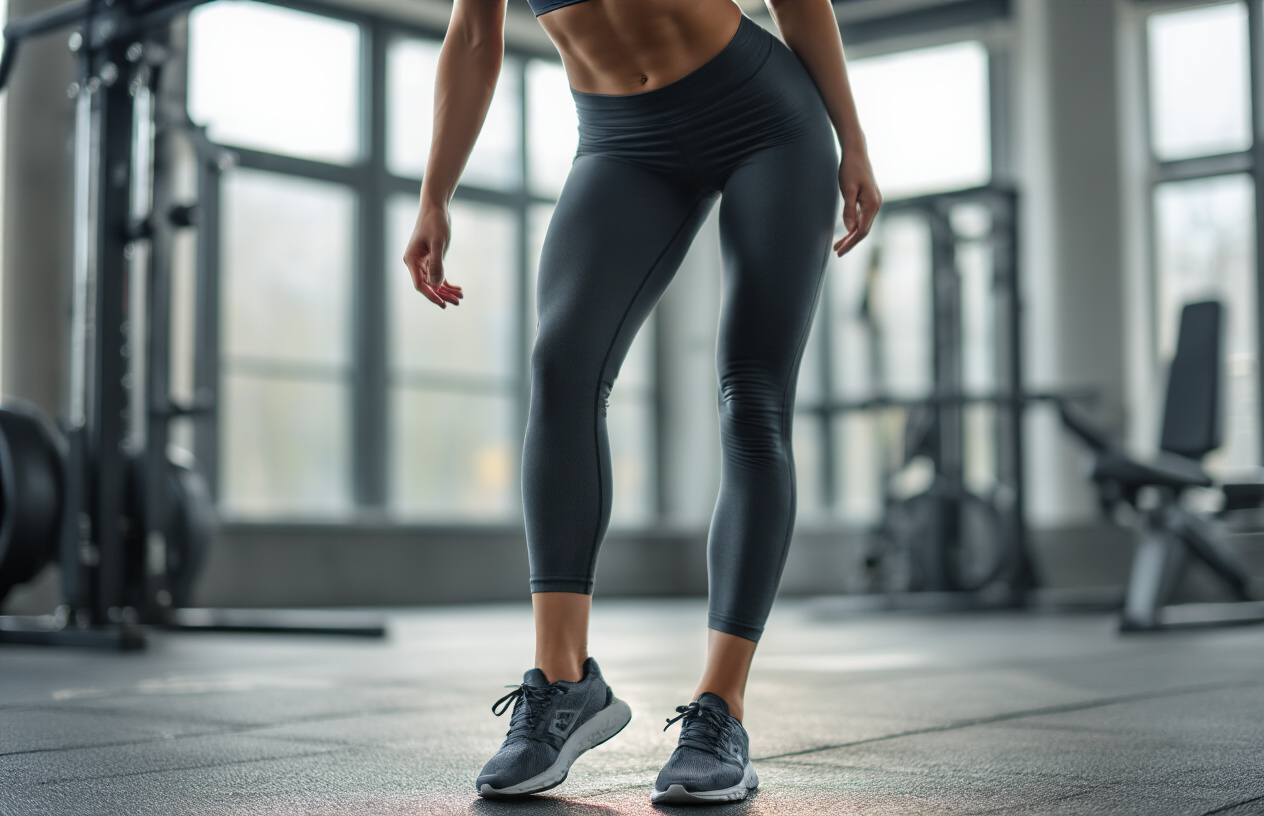
Standing Calf Raises for Maximum Muscle Engagement
Standing calf raises form the foundation of any effective calf training routine. Position your feet hip-width apart with your weight evenly distributed across both feet. Rise onto your toes by pushing through the balls of your feet, creating maximum tension in your gastrocnemius and soleus muscles. Hold the peak contraction for 2-3 seconds before slowly lowering back to the starting position.
The key to maximizing muscle engagement lies in controlling the tempo. Take 3 seconds to rise, pause at the top, then take another 3 seconds to lower. This controlled movement creates constant tension throughout the entire range of motion. Perform 3 sets of 15-20 repetitions, focusing on quality over quantity.
For added challenge, elevate your toes on a step or platform. This increased range of motion allows for deeper muscle stretching and greater activation of the calf complex. Keep your knees slightly bent throughout the movement to prevent joint stress and maintain proper muscle recruitment.
Single-Leg Calf Raises for Balanced Strength Building
Single-leg variations eliminate compensation patterns between your stronger and weaker leg. Stand near a wall for light balance support, but avoid relying on it for assistance. Lift one foot off the ground and perform the calf raise motion with your working leg.
This unilateral approach reveals strength imbalances that bilateral exercises often mask. Your weaker leg gets targeted attention while your stronger leg maintains its current strength level. Start with 8-12 repetitions per leg and gradually increase as your balance and strength improve.
The stabilization requirement of single-leg raises activates smaller stabilizing muscles throughout your lower leg and ankle complex. These often-neglected muscles contribute significantly to overall calf definition and functional strength. Hold onto a chair or wall lightly if needed, but challenge yourself to reduce assistance over time.
Jump Rope Variations for Cardiovascular Fat Burning
Jump rope transforms calf training into a high-intensity cardiovascular workout that burns calories while building lean muscle. The constant bouncing motion requires continuous calf muscle activation, creating both strength and endurance benefits.
Basic two-foot bouncing provides the foundation. Keep your jumps low – only lift your feet 1-2 inches off the ground. Land softly on the balls of your feet, allowing your calves to act as natural shock absorbers. Maintain a steady rhythm for 30-60 seconds before resting.
Alternate between different jumping patterns to challenge your muscles from various angles:
- Single-leg hops: Switch between legs every 10 jumps
- Side-to-side jumps: Create lateral movement while maintaining rhythm
- High knees: Bring knees toward your chest with each jump
- Double unders: Rotate the rope twice per jump for intensity
Start with 3-minute sessions, alternating 30 seconds of jumping with 30 seconds of rest. Gradually increase working intervals while decreasing rest periods as your conditioning improves.
Wall Push-Off Exercises for Explosive Power Development
Wall push-offs develop explosive power in your calf muscles while improving your ability to generate force quickly. Stand arm’s length from a sturdy wall with your hands flat against it at shoulder height.
Lean forward slightly, creating tension in your calves. Push forcefully against the wall while simultaneously pushing off with your toes, creating a explosive backward movement. Land softly and immediately repeat the movement. This plyometric action trains your fast-twitch muscle fibers responsible for power and definition.
Perform 3 sets of 10-15 explosive repetitions with 60-90 seconds rest between sets. Focus on maximum effort during each push-off rather than simply going through the motions. The explosive nature of this exercise elevates your heart rate while building the type of lean, defined muscle tissue that creates the toned appearance most people desire.
Progress by increasing the distance from the wall or adding a small jump during the push-off phase. These variations increase the demand on your calf muscles while developing the reactive strength that translates to improved athletic performance and muscle definition.
Equipment-Based Exercises for Advanced Calf Sculpting

Weighted Calf Raises for Progressive Overload
Adding weight to your calf raises transforms a simple bodyweight movement into a powerful muscle-building exercise. Start with dumbbells held at your sides, gradually increasing the load as your strength improves. Position yourself on a stable surface with the balls of your feet elevated on a platform or step, allowing your heels to drop below the level of your toes for maximum range of motion.
The key to effective weighted calf raises lies in controlling both the lifting and lowering phases. Push through your toes to raise your heels as high as possible, hold for a brief pause, then slowly lower back down. This controlled movement creates the tension needed for lean muscle development.
Progressive Loading Options:
- Week 1-2: 10-15 lb dumbbells, 3 sets of 15-20 reps
- Week 3-4: 20-25 lb dumbbells, 3 sets of 12-15 reps
- Week 5+: 30+ lb dumbbells, 4 sets of 10-12 reps
For single-leg variations, hold one dumbbell in the hand opposite to the working leg. This approach challenges your balance while allowing you to focus on each calf individually, helping correct any strength imbalances between legs.
Resistance Band Exercises for Constant Muscle Tension
Resistance bands provide unique benefits for calf training by maintaining tension throughout the entire range of motion. Unlike weights that rely on gravity, bands create variable resistance that increases as the band stretches, perfectly matching your muscle’s strength curve.
Seated Band Calf Press: Sit with legs extended, loop a resistance band around the balls of your feet, and hold the ends with your hands. Point your toes away from your body, feeling the stretch in your calves, then flex your feet back toward your shins. The band should provide steady resistance in both directions.
Standing Band Calf Raises: Secure a loop band under your feet and hold the top portion with your hands. Perform calf raises while the band adds extra resistance at the top of the movement. This variation works especially well for targeting the soleus muscle when performed with slightly bent knees.
Band-Assisted Calf Stretches: After your workout, use the band to perform controlled stretches. Sit with one leg extended, loop the band around your foot, and gently pull your toes toward your shin. This active stretching helps maintain flexibility while the muscle recovers.
Stair Climbing Techniques for Functional Strength
Stairs offer an excellent platform for functional calf training that mimics real-world movement patterns. The natural step height provides the perfect elevation for calf raises while building strength that translates to daily activities.
Step-Up Calf Raises: Place the ball of one foot on a step, allowing your heel to hang below the step level. Rise up onto your toes, pause briefly, then lower slowly until you feel a stretch in your calf. Complete all reps on one leg before switching sides.
Two-Step Bounds: Skip every other step while climbing, focusing on pushing off powerfully with each step. This explosive movement builds both strength and power in your calves while improving coordination.
Backward Step-Downs: Face away from the stairs and step down backward, controlling the movement with your calves. This eccentric-focused exercise builds incredible strength in the lowering phase of movement.
Calf Raise Variations on Steps:
- Single-leg raises for unilateral strength
- Double-leg raises for building endurance
- Pause raises with 2-3 second holds
- Speed raises for power development
Practice these movements 2-3 times per week, treating stairs as your personal calf-sculpting gym that’s always available.
High-Intensity Calf Workouts for Fat Burning
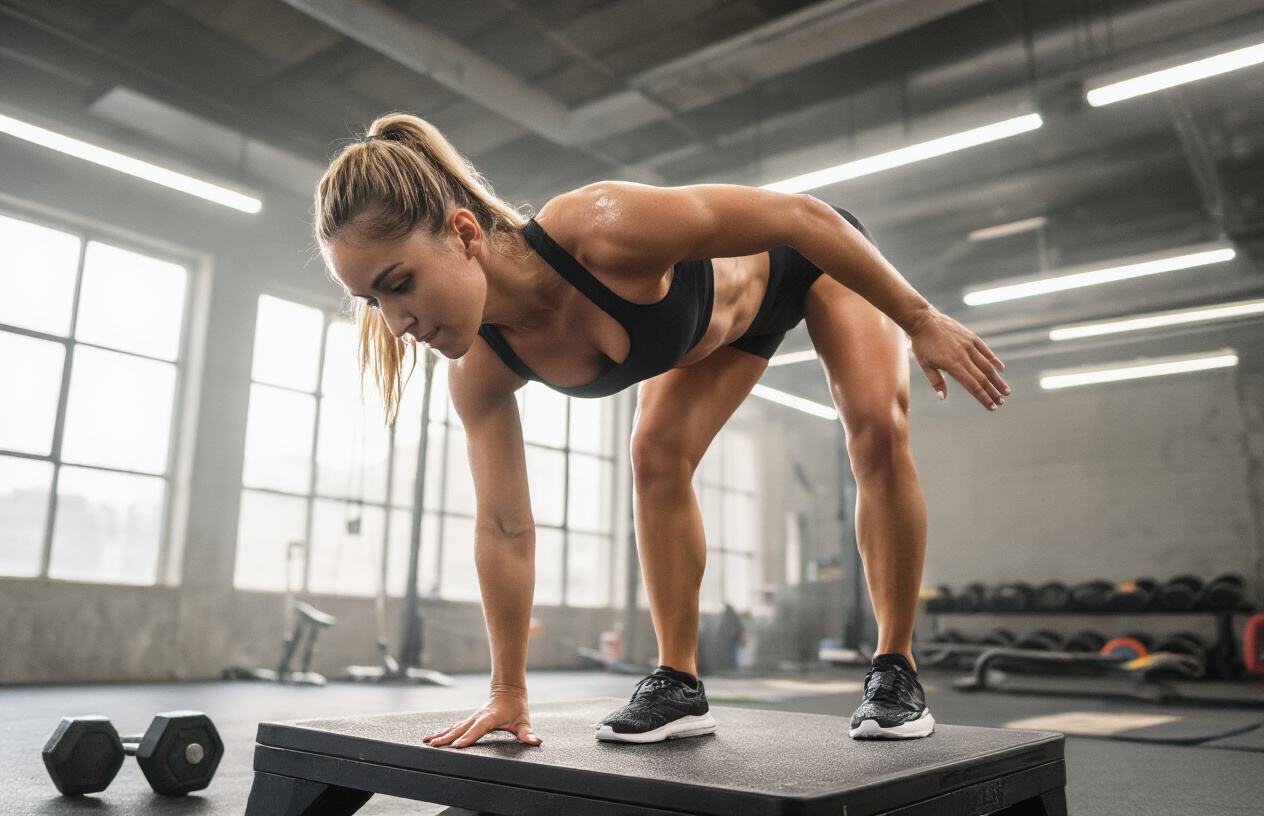
Plyometric Jumping Exercises for Metabolic Boost
Jump squats with calf emphasis transform regular movements into calf-burning powerhouses. Start with feet hip-width apart, squat down, then explode upward while pointing your toes downward at the peak. Land softly on the balls of your feet and immediately sink into the next squat. This creates continuous tension in your calves while ramping up your heart rate.
Box jumps add height variation to challenge your calves differently. Jump onto a sturdy surface, focusing on pushing through your toes during takeoff. Step down slowly to control the eccentric loading on your calf muscles. Vary the box height every few weeks to keep your muscles adapting.
Single-leg hop sequences isolate each calf individually. Hop forward, backward, and laterally on one foot for 30 seconds before switching legs. Your calves work overtime to stabilize and propel your body weight, creating lean muscle definition while torching calories.
Tuck jumps combine explosive power with calf activation. Jump vertically while pulling your knees toward your chest, landing on your toes before immediately launching into the next rep. This rapid-fire movement keeps your calves engaged throughout the entire exercise while maximizing metabolic demand.
Circuit Training Combinations for Time Efficiency
The “Calf Crusher Circuit” combines four exercises performed back-to-back with 15-second transitions. Start with 45 seconds of jump rope, move to 45 seconds of calf raises, then 45 seconds of jumping jacks, finishing with 45 seconds of high knees. Rest for 60 seconds and repeat for 4-6 rounds.
Tabata-style calf circuits pack maximum intensity into minimum time. Alternate between 20 seconds of maximum effort jumping exercises and 10 seconds of rest. Try alternating jump squats and single-leg hops for 8 rounds (4 minutes total). Your calves will be screaming, but the metabolic boost lasts for hours.
The “Stair Climber Simulation” circuit mimics stair climbing without needing actual stairs. Perform step-ups on a bench, alternating leg bounds, calf raise jumps, and lateral step touches. Each exercise targets your calves from different angles while maintaining elevated heart rate throughout the 12-minute session.
Create equipment-free combinations by pairing calf-focused moves with full-body exercises. Mix burpees with calf raises, mountain climbers with jump squats, and plank jacks with single-leg hops. This approach burns maximum calories while sculpting lean calf definition.
Sprint Intervals Targeting Calf Activation
Hill sprints naturally emphasize calf engagement due to the inclined surface. Sprint uphill for 20-30 seconds, focusing on driving through your toes with each stride. Walk back down slowly for active recovery, then repeat 6-8 times. The combination of speed and incline forces your calves to work harder than flat-ground running.
Stair sprints provide intense calf stimulation with built-in recovery periods. Sprint up a flight of stairs, taking every other step to maximize calf stretch and contraction. Walk back down slowly, then repeat. Stadium stairs work perfectly, but any sturdy staircase will challenge your calves while incinerating calories.
Sand or grass sprints add instability that requires greater calf stabilization. The softer surface forces your calves to work harder for propulsion and balance. Sprint for 15-20 seconds, rest for 45 seconds, and repeat 10-12 times. Your calves adapt by becoming stronger and more defined.
Backwards running intervals target your calves from a completely different angle. Run backwards for 30 seconds at moderate intensity, focusing on landing on your toes. This unusual movement pattern challenges your calves in ways that forward running cannot, promoting balanced muscle development.
Mountain Climber Variations for Full-Body Engagement
Traditional mountain climbers already engage your calves as stabilizers, but elevating your hands on a bench intensifies calf involvement. The increased angle forces your calves to work harder maintaining the plank position while driving your knees toward your chest. Perform for 45 seconds with explosive leg switches.
Single-leg mountain climbers isolate each calf individually while maintaining the cardiovascular challenge. Hold one leg in the starting position while performing mountain climbers with only one leg for 30 seconds, then switch sides. Your stationary leg’s calf works overtime for stabilization.
Cross-body mountain climbers add rotational movement that challenges calf stability in multiple planes. Drive your right knee toward your left elbow, then switch to left knee toward right elbow. This diagonal movement pattern requires greater calf engagement for balance and control.
Mountain climber to jump squat combinations create explosive transitions that maximize calf activation. Perform 8 mountain climbers, jump your feet to your hands, then explode into a jump squat. This flowing sequence keeps your calves constantly engaged while providing intense metabolic stimulation. The rapid transitions between exercises challenge your calves’ ability to adapt quickly between different movement patterns.
Proper Exercise Form and Technique Optimization
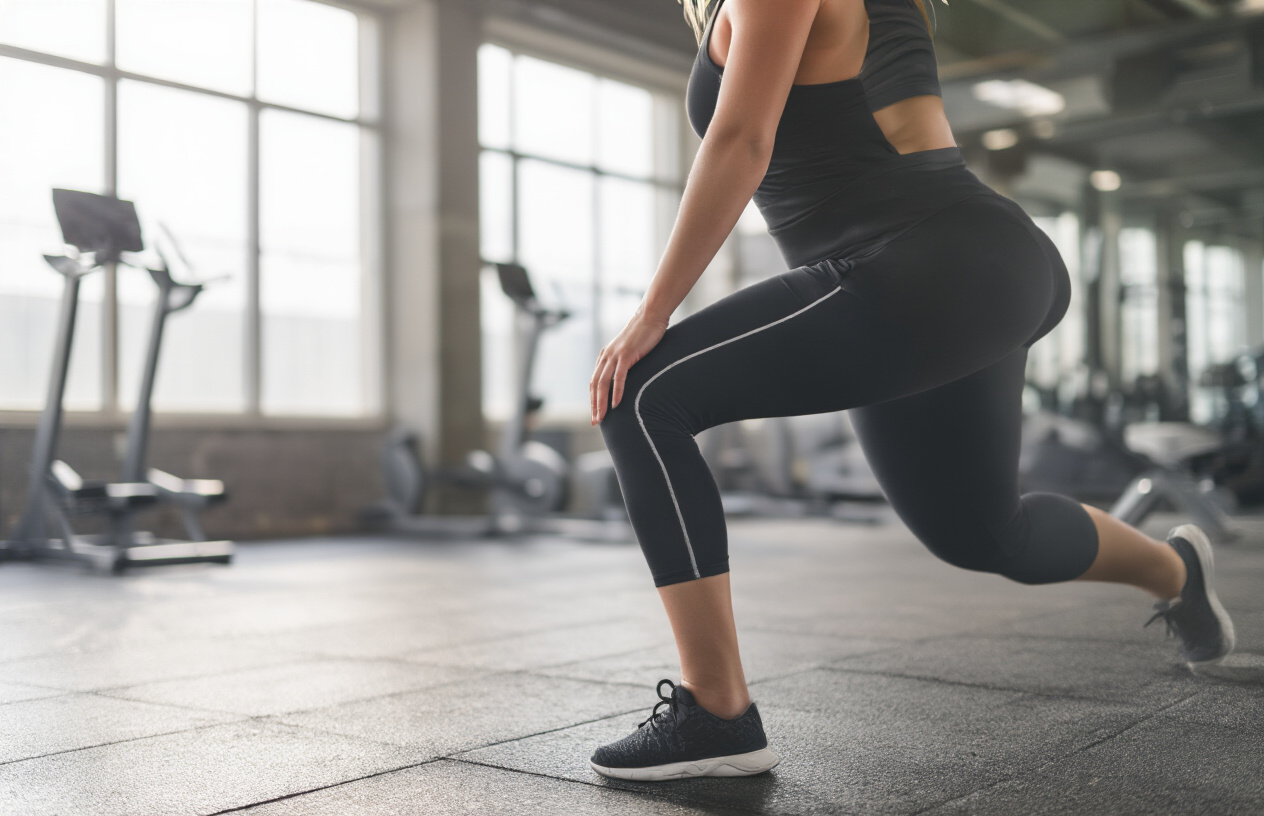
Foot Positioning Strategies for Maximum Muscle Activation
Your foot position directly impacts which muscles fire during calf exercises. For a balanced approach, start with your feet parallel and hip-width apart. This neutral stance targets both the gastrocnemius and soleus muscles evenly.
Try the “toes-in” position by pointing your toes slightly inward to emphasize the outer portion of your calves. The “toes-out” stance does the opposite, shifting focus to the inner calf muscles. Experiment with different angles throughout your workout to hit every muscle fiber.
The width of your stance matters too. A narrower stance creates more instability, forcing your calves to work harder for balance. A wider stance provides more stability but may reduce overall muscle activation. Switch between both during your training sessions.
Range of Motion Principles for Complete Muscle Development
Full range of motion separates good calf exercises from great ones. Start each rep from a deep stretch position where your heels drop as low as possible. This stretch activates more muscle fibers and improves flexibility.
At the top of each movement, rise onto your tiptoes as high as you can manage. Hold this peak contraction for one to two seconds to maximize muscle tension. This pause forces your calves to work harder and builds that coveted muscle definition.
Avoid bouncing at the bottom of the movement. This reduces muscle tension and can lead to injury. Control both the lifting and lowering phases with deliberate, smooth movements. The eccentric (lowering) portion builds just as much strength as the concentric (lifting) phase.
Breathing Techniques During Calf Exercises
Proper breathing keeps your muscles supplied with oxygen and maintains your rhythm during challenging sets. Exhale as you rise onto your toes during the concentric phase. This helps stabilize your core and generates more power.
Inhale during the lowering phase as you return to the starting position. This pattern feels natural and prevents you from holding your breath, which can spike blood pressure and reduce performance.
For single-leg exercises or challenging variations, take a deep breath before starting each rep. This gives you better stability and control throughout the movement. Never hold your breath for extended periods during any calf exercise.
Common Form Mistakes That Limit Results
Speed kills results when it comes to calf training. Many people bounce through reps quickly, relying on momentum instead of muscle contraction. This reduces time under tension and limits muscle growth. Slow down your reps to feel each muscle working.
Incomplete range of motion is another major mistake. Doing half-reps might feel easier, but you’re missing out on the full muscle-building potential. Always start from a full stretch and finish at full extension.
Using your arms for momentum defeats the purpose of calf training. Keep your arms relaxed at your sides or lightly touching a wall for balance only. Your calves should do all the work.
Poor weight distribution also hampers progress. Some people lean forward or backward during calf raises, which shifts the load away from the target muscles. Keep your body upright and centered over your feet throughout each movement.
Recovery and Nutrition Strategies for Lean Calf Development

Post-workout stretching routines for flexibility
Your calves take a beating during intense workouts, so proper stretching is non-negotiable if you want lean, functional muscles. Start with the classic wall calf stretch – place your hands against a wall, step your right foot back about three feet, and lean forward while keeping your heel planted. Hold for 30 seconds, then switch sides. This targets your gastrocnemius muscle beautifully.
The seated towel stretch works wonders for your deeper soleus muscle. Sit with legs extended, loop a towel around your foot, and gently pull your toes toward your shin. Feel that deep stretch through your entire calf complex.
Don’t skip the standing soleus stretch – step into a lunge position, but keep your back heel down and bend that back knee slightly. This angle hits the soleus muscle that often gets neglected.
Add some dynamic stretching too. Calf raises with a pause at the top, followed by slow, controlled lowering, help maintain flexibility while your muscles are still warm. Ankle circles and flexion exercises keep your joints mobile and prevent stiffness.
Dedicate 10-15 minutes to stretching immediately after your calf workout when muscles are most pliable. Your flexibility gains will be significant, and you’ll reduce soreness for your next training session.
Protein timing for muscle repair and growth
Your muscles don’t magically repair themselves – they need the right fuel at the right times. The post-workout window matters more than many people realize. Within 30-60 minutes after your calf workout, your muscles are primed to absorb nutrients and begin the repair process.
Aim for 20-25 grams of high-quality protein during this window. Greek yogurt with berries, a protein smoothie, or even a handful of almonds with some milk can do the trick. Your muscles use these amino acids as building blocks to repair the tiny tears created during exercise.
But don’t stop there. Spread your protein intake throughout the day – roughly 15-25 grams every 3-4 hours keeps your muscles in a constant state of repair and growth. This steady supply prevents muscle breakdown and supports the lean, toned look you’re after.
Leucine-rich foods pack extra punch for muscle development. Eggs, lean meats, dairy, and legumes contain this powerful amino acid that triggers muscle protein synthesis. Before bed, casein protein or a small serving of cottage cheese provides slow-releasing amino acids that work while you sleep.
Quality matters as much as timing. Whole food sources like chicken, fish, quinoa, and lentils provide complete amino acid profiles your muscles crave for optimal recovery.
Hydration requirements for optimal performance
Water isn’t just about quenching thirst – it’s your secret weapon for lean calf development. Your muscles are roughly 75% water, and even mild dehydration can torpedo your performance and recovery.
Start hydrating well before your workout. Drink 16-20 ounces of water 2-3 hours before training, then another 8 ounces 15-30 minutes before you begin. During your calf workout, sip 6-8 ounces every 15-20 minutes, especially during high-intensity sessions.
Post-workout hydration is where many people drop the ball. For every pound of body weight lost during exercise, drink 16-24 ounces of water. Weigh yourself before and after workouts to get accurate numbers.
Electrolyte balance becomes critical during longer or more intense sessions. Sodium, potassium, and magnesium help your muscles contract properly and prevent cramping. Natural coconut water, a pinch of sea salt in your water, or electrolyte tablets keep you balanced without unnecessary sugars.
| Hydration Timeline | Amount | Purpose |
|---|---|---|
| 2-3 hours before | 16-20 oz | Pre-loading |
| 15-30 min before | 8 oz | Immediate prep |
| During workout | 6-8 oz every 15-20 min | Maintenance |
| Post-workout | 16-24 oz per pound lost | Recovery |
Monitor your urine color – pale yellow indicates proper hydration, while dark yellow suggests you need more fluids. Your calf muscles will thank you with better contractions and faster recovery.

Getting slim, toned calves comes down to understanding how your muscles work and choosing the right mix of exercises. Start with bodyweight moves like calf raises and progress to equipment-based workouts as you get stronger. High-intensity training will help burn fat while building lean muscle, but don’t forget that proper form beats heavy weight every time. Your calves need consistent challenge and variation to see real changes.
Recovery and smart nutrition play just as big a role as your workout routine. Give your muscles time to repair between sessions and fuel them with quality protein and nutrients. Start with basic exercises today, focus on perfect technique, and gradually add intensity. Your calves will thank you for the attention, and you’ll love the definition you start to see in just a few weeks of dedicated training.




